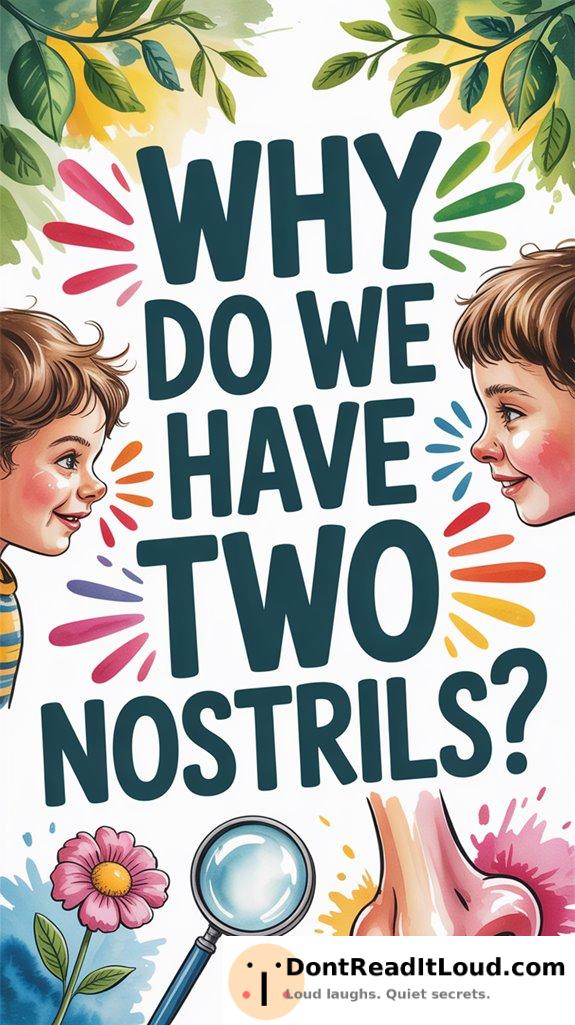
You have two nostrils to help you breathe easier and detect scents more precisely. They also provide a backup if one side gets blocked, maintaining steady airflow. The nostrils take turns working harder, giving each side a chance to rest. Together, they help you pinpoint where smells are coming from, which was crucial for our ancestors to find food and stay safe. Want to know more about how your nose works? There’s still plenty to explore.
The Anatomy of the Nose
The nose is more than just a facial feature; it’s a complex structure essential for breathing and smelling. Think of it as your built-in air conditioner, complete with its own filtration and humidification system.
At the heart of this setup is nasal cartilage, the flexible yet strong tissue that shapes your nose. Without it, your nose would collapse and lose its structure—not the best look!
Now, let’s talk nostril symmetry. You might assume those two openings are exactly alike, but they’re more like siblings with distinct personalities.
In fact, your nostrils alternate airflow, giving each side a break. So next time you look at your nose, appreciate its unique balance and design!
The Role of Nostrils in Smell
While you mightn’t think about it often, your nostrils play a crucial role in how you perceive the world through smell. Envision your nostrils as two tiny detectives, each with a magnifying glass, working together to solve the mystery of “What’s that smell?”
Their symmetry keeps you from wandering in circles as you try to locate the source of that bacon aroma.
Your nose’s ability to detect scents is finely tuned, thanks to the teamwork between both nostrils. They alternate as the lead “sniff detective,” helping you experience a wide range of smells.
Airflow and Breathing Efficiency
Ever wondered why we’ve two nostrils instead of just one? Imagine struggling to breathe through a single passage during a nasty bout of congestion. With two nostrils, you always have an alternative route for airflow.
If one side is blocked, the other keeps you breathing comfortably rather rather than sounding like a foghorn. Having a pair of nostrils also boosts overall airflow, making breathing more effective and efficient.
Think of your two nostrils as a natural backup system against sinus troubles. Relying on just one would make breathing awkward and inefficient.
Evolutionary Advantages of Dual Nostrils
Beyond the practical benefits of breathing efficiency, having two nostrils offers evolutionary advantages that helped humans adapt and survive. Ever wonder why we’ve two nostrils instead of just one? It’s not only about symmetry. Binaural olfaction, or “stereo smelling,” allows us to detect the direction of scents.
Imagine smelling a pizza and immediately knowing where it’s coming from—skills like these once helped our ancestors avoid predators and find food.
Additionally, nostril dominance means that one nostril is always a bit more open, and they switch off throughout the day. This gives each nostril a break while still allowing us to stay alert to smells in our environment.
Conclusion
You’ve just learned why humans have two nostrils. Their unique structure sharpens your ability to recognize different smells. With two nostrils, airflow is balanced for easier breathing. Evolutionarily, having a pair helps you sense hazards in the air and supports healthy lungs. So, when you breathe deeply or notice a fragrance, remember how well your two nostrils work together!



